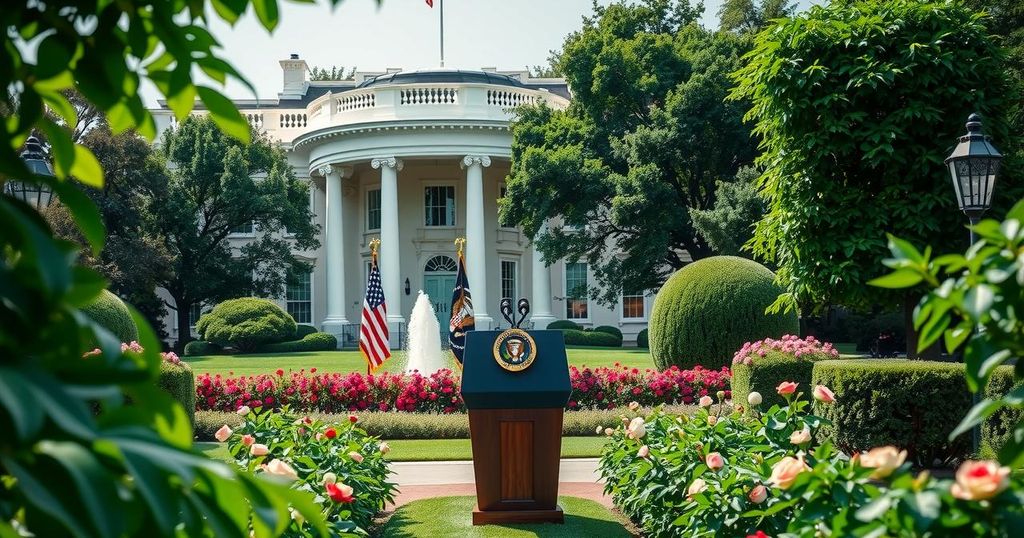The White House highlights tariffs by India as obstacles to U.S. exports, estimating an annual $5.3 billion increase if removed. An executive order by Trump introduces reciprocal tariffs, pointing to India’s high tariffs and advocating for more equitable trade practices.
The White House has identified significant trade barriers imposed by India, referring to these measures as “burdensome testing” that raise the cost for U.S. companies attempting to penetrate the Indian market. The administration estimates that if these barriers were eliminated, U.S. exports could potentially increase by $5.3 billion annually.
An executive order was signed by former President Trump titled “Regulating Imports with a Reciprocal Tariff to Rectify Trade Practices that Contribute to Large and Persistent Annual United States Goods Trade Deficits.” He proclaimed this measure as “Liberation Day,” marking April 2, 2025, as a pivotal date for American industry.
The executive order criticizes India’s high tariffs on U.S. goods, noting that U.S. tariffs, at an average of 3.3 percent, are among the lowest globally, compared to higher averages in trading partners such as India, which imposes an average of 17 percent. This disparity raises concerns regarding fair trade practices as established by the World Trade Organization (WTO).
Specific product tariff differences highlight the issue further. For instance, while the U.S. applies a 2.5 percent tariff on passenger vehicles, countries like India impose tariffs as high as 70 percent. Similarly, there are notable discrepancies for other products, such as network switches and routers, where India charges a 10 percent tariff compared to 0 percent by the U.S.
As Trump announced new tariffs, he emphasized that India charges U.S. firms a steep tariff of 52 percent on average, while the U.S. will respond with a reduced reciprocal tariff of 26 percent. He acknowledged the tough trade dynamics with India and expressed dissatisfaction, stating, “They charge us 52%. You have to understand, we charge them almost nothing.”
The article outlines the White House’s concerns about high tariffs and trade practices imposed by India, which are perceived as obstacles to U.S. exports. The signed executive order aims to address these discrepancies by implementing reciprocal tariffs, allowing U.S. products a better competitive edge. The projected increase in U.S. exports emphasizes the potential economic benefit of addressing these trade barriers.
Original Source: m.economictimes.com






